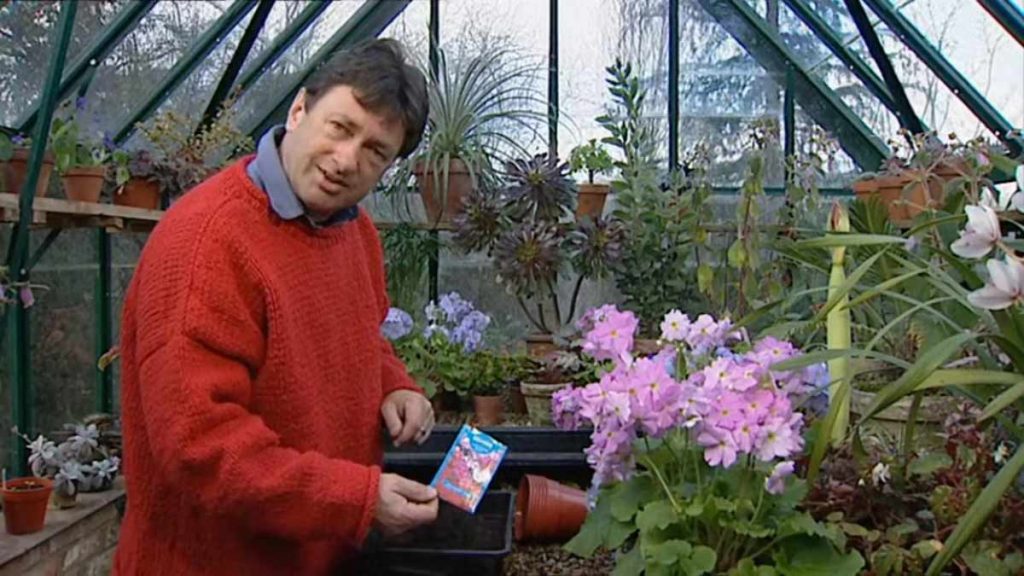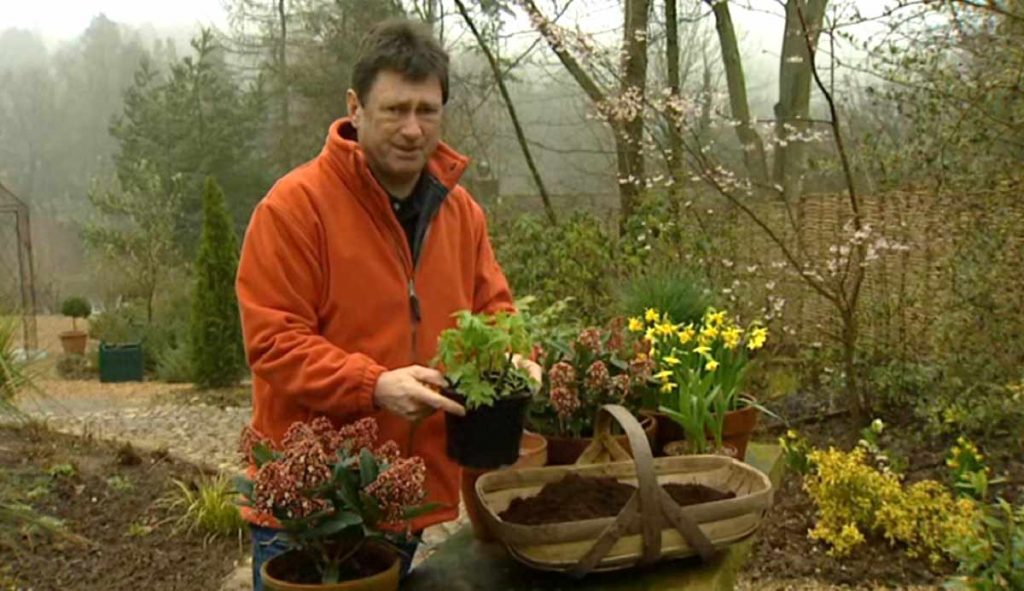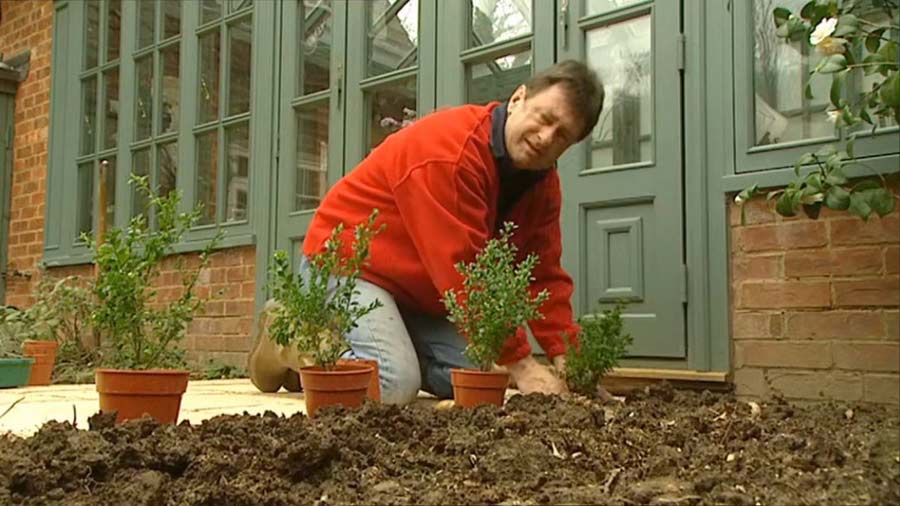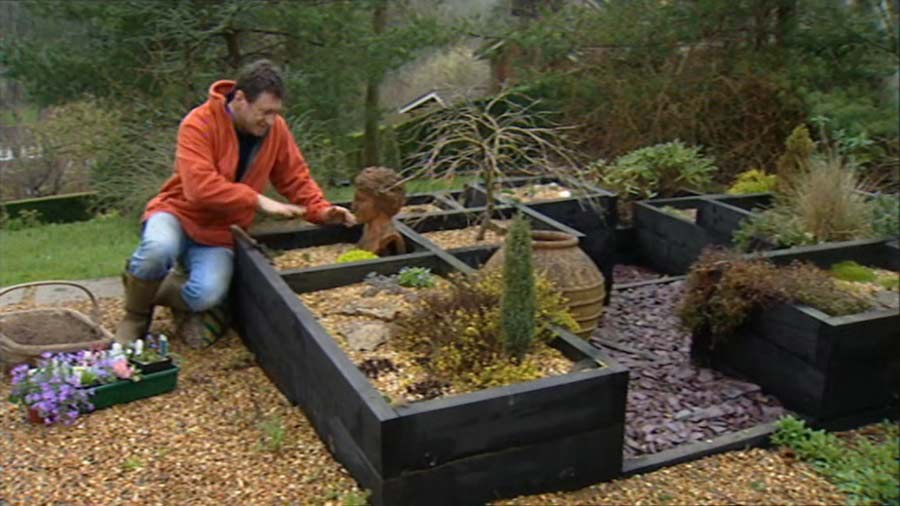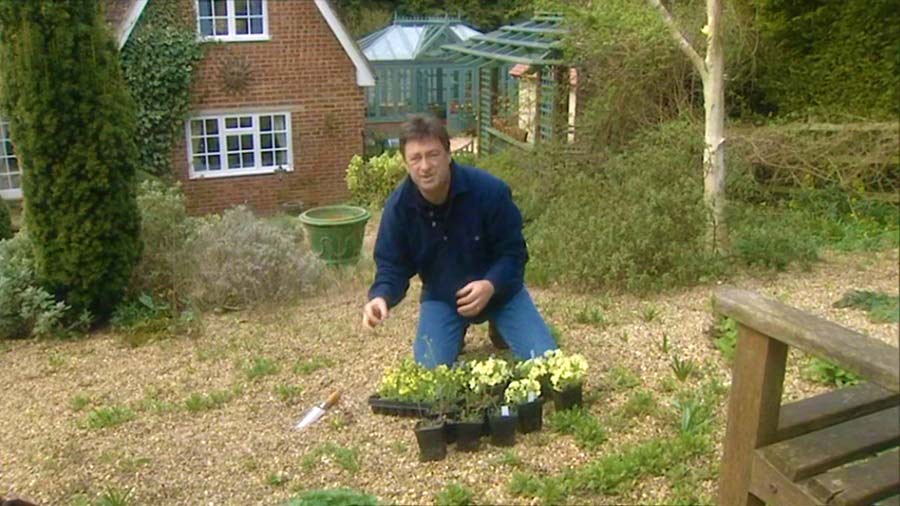Gardeners World episode 1 2002: Alan Titchmarsh reveals the changes he has made to his garden over the winter and reveals his new plans for the year.
Gardening show packed with good ideas, tips, advice from experts and timely reminders to get the most out of your garden, whatever its size or type.
Gardeners World episode 1 2002
Snowdrops
For welcome assurance that the brighter days of spring are on their way, look no further than snowdrops (Galanthus). They are surprisingly varied in height, flower size, shape and even colouring. Given a moist soil they will multiply into drifts and provide plenty of plants to share with fellow gardeners.
Sheathed in strappy, often arching, bright green or greyish leaves, thin stems dangle bell-like white flowers, outer petals flaring to reveal shorter inner ones touched with green. Some have double flowers. Snowdrops will grow in most soil types, apart from permanently wet soil, preferably in partial shade – around deciduous trees and shrubs is ideal.
These plants dislike very dry, sandy soils, especially in full sun that dries out around the bulbs out in summer.
Division
Lift and divide clumps as the foliage turns yellow. Split the clumps into smaller pieces with as little disturbance as possible. Bulbs can also be planted singly at the same depth as they were on the soil.
Seed
Collect and sow seed as soon as they ripen. Germination should take place as the temperatures start to rise after winter.
Herbaceous border
A herbaceous border is a collection of perennial herbaceous plants (plants that live for more than two years and are soft-stemmed and non-woody) arranged closely together, usually to create a dramatic effect through colour, shape or large scale. The term herbaceous border is mostly in use in the United Kingdom and the Commonwealth. In North America, the term perennial border is normally used.
Herbaceous borders as they are known today were first popularly used in gardens in the Victorian era. Hybridization and new imported plant species revolutionized the form of British gardens in the 18th and 19th centuries. In addition, the works of Gertrude Jekyll, a British 20th-century garden designer and prolific writer, popularized the use of the herbaceous border through a revival of the British cottage garden.
